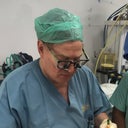Posted underFacelift q&a
Is there always a scar in front of the ears after lower facelift? And how long does it takes for scars to fade?
Answers (22)
From board-certified doctors and trusted medical professionals
Dr. Mark Hamilton, MD

Dr. Mark Hamilton, MD
Board Certified Facial Plastic Surgeon
Answer
Dr. Mark Karolak, DO, FAOCO

Dr. Mark Karolak, DO, FAOCO
Facial Plastic Surgeon, Board Certified in Otolaryngology – Head and Neck Surgery
Answer
Dr. Larry Weinstein, MD

Dr. Larry Weinstein, MD
Board Certified Plastic Surgeon
Answer
Dr. Andrew Miller, MD

Dr. Andrew Miller, MD
Board Certified Facial Plastic Surgeon
Answer
Dr. Sam Speron, MD, FACS

Dr. Sam Speron, MD, FACS
Board Certified Plastic Surgeon
Answer
Dr. David Gilpin, MD

Dr. David Gilpin, MD
Board Certified Facial Plastic Surgeon
Answer
Dr. Andrew P. Trussler, MD

Dr. Andrew P. Trussler, MD
Board Certified Plastic Surgeon
Answer
Dr. Samuel Shatkin, Jr., MD

Dr. Samuel Shatkin, Jr., MD
Board Certified Plastic Surgeon
Answer
Dr. Richard G. Reish, MD, FACS

Dr. Richard G. Reish, MD, FACS
Board Certified Plastic Surgeon
Answer
More Facelift Questions
See all Facelift Q&AWE SEND PRETTY
EMAILS
What’s trending? Who’s turning heads? Which TikTok myths need busting? We’ve got you. No fluff, no gatekeeping—just real talk. Get our free, unfiltered newsletter.
